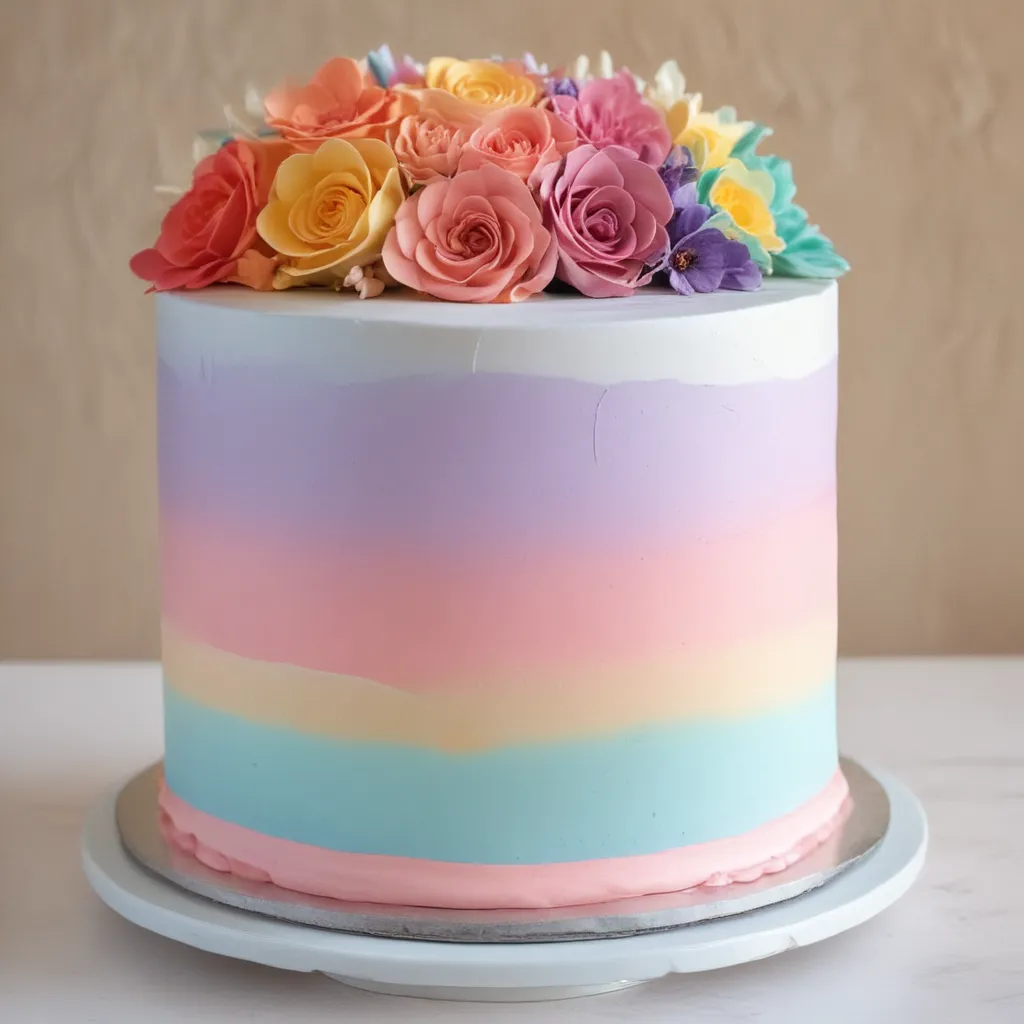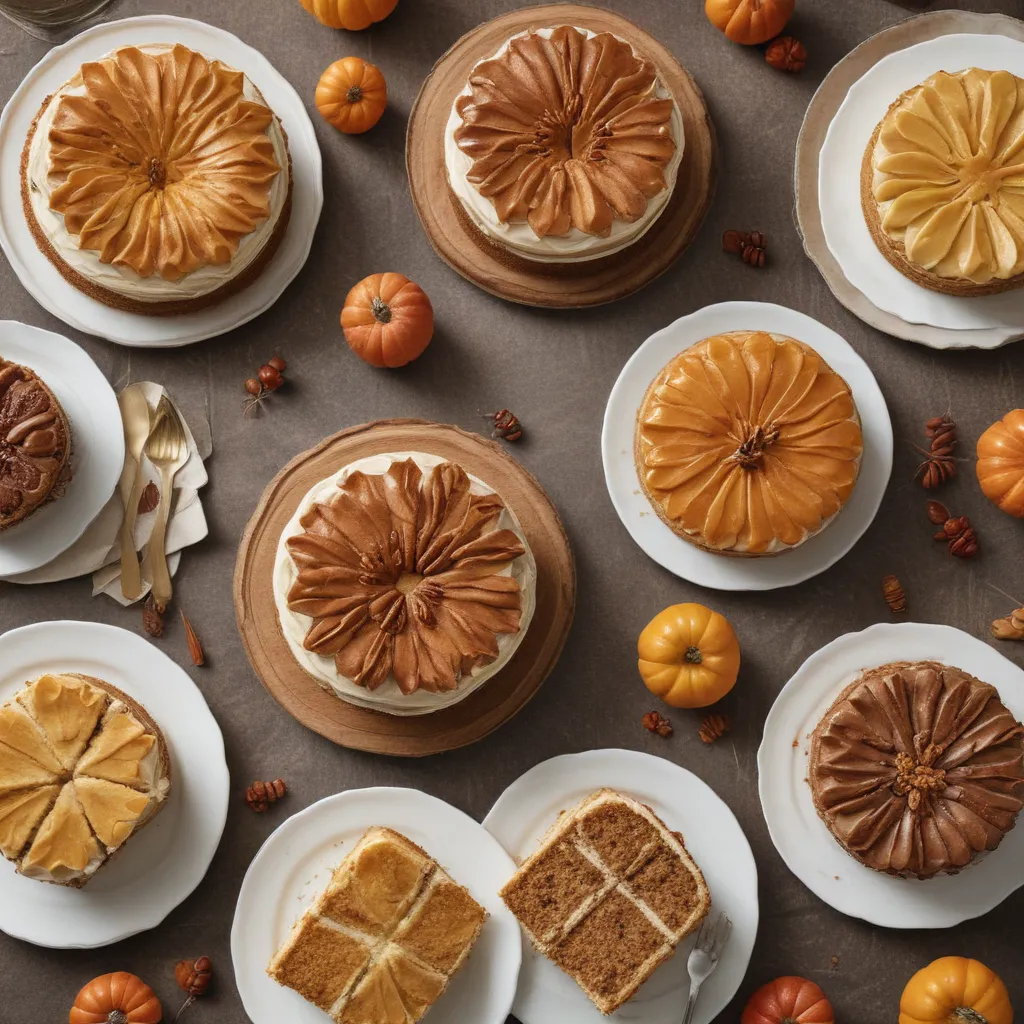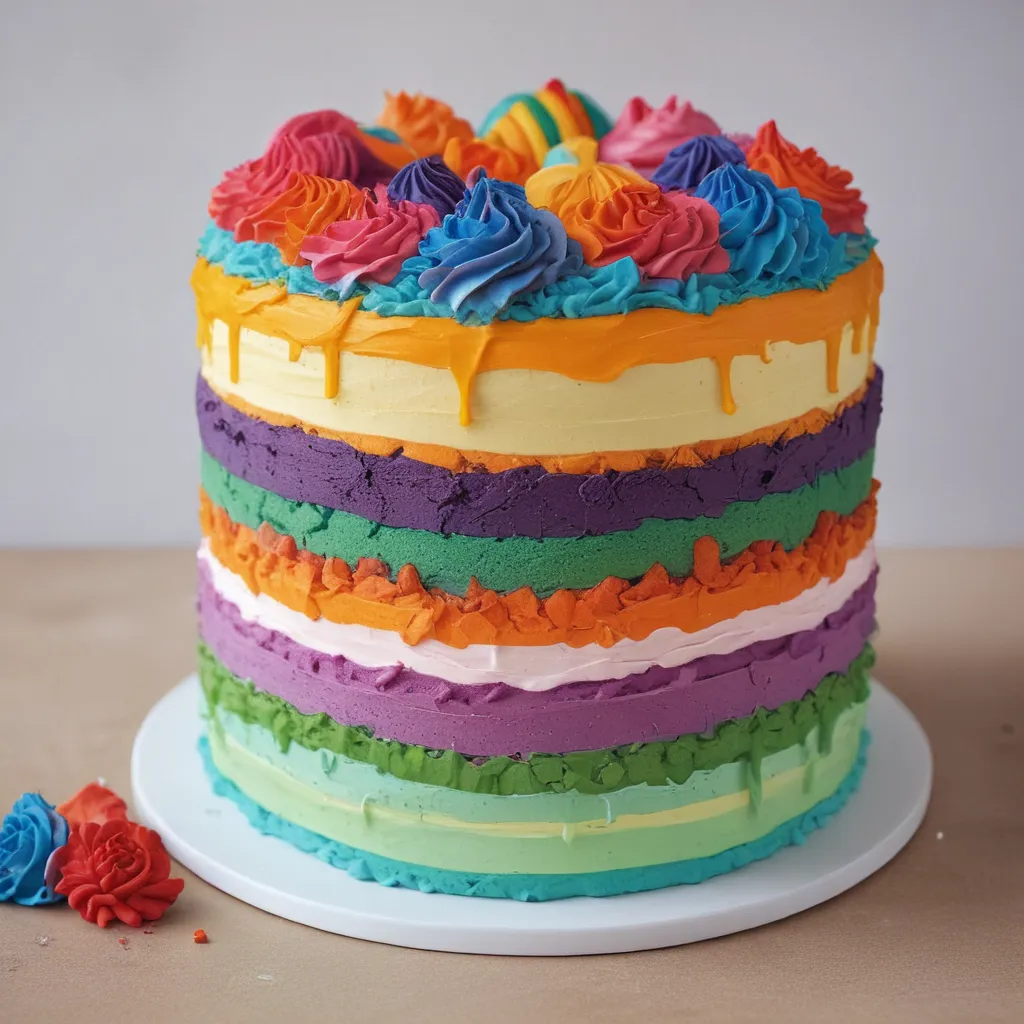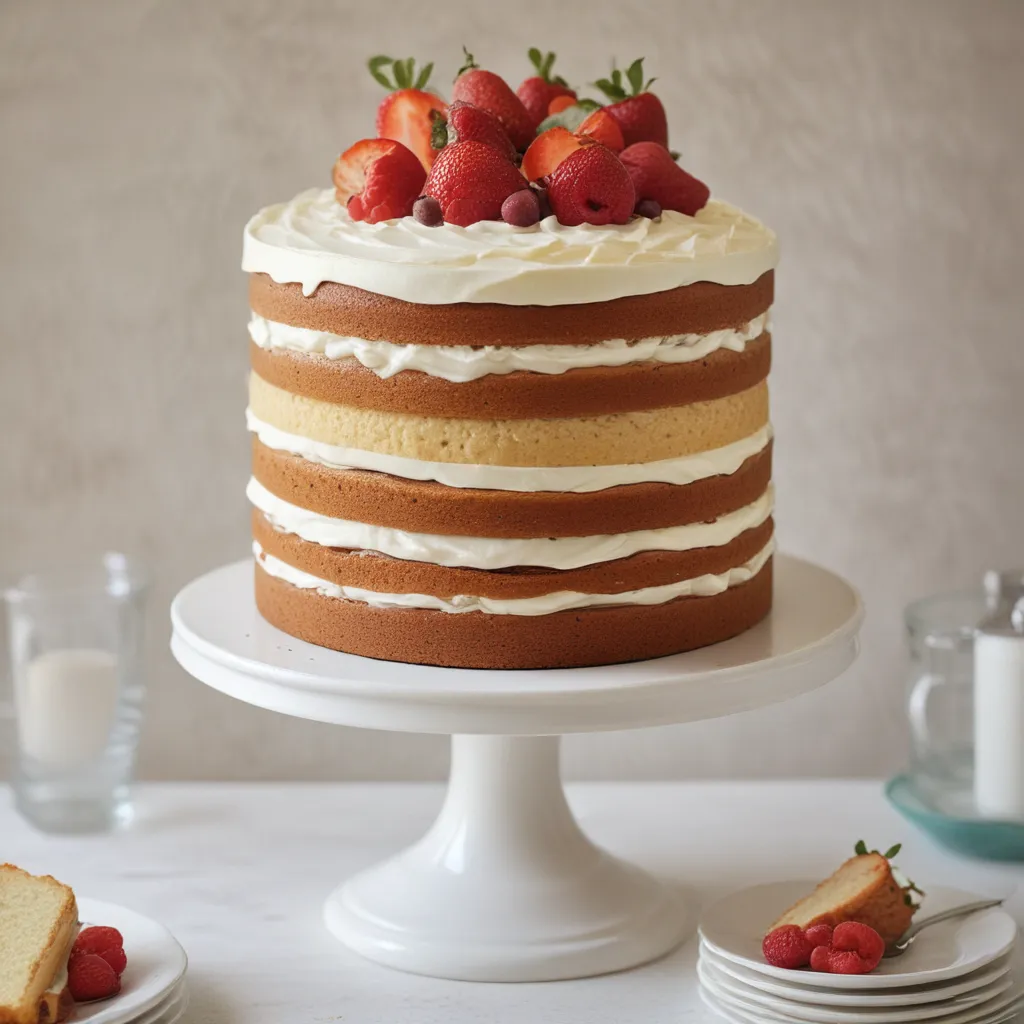
The Colorful World of Cake Baking
Ah, the world of custom cakes – where the only limit is your imagination (and perhaps a few laws of physics)! As the proud owner of a small cake shop in San Jose, I’ve had the pleasure of creating all sorts of colorful, one-of-a-kind confections for my lovely customers. From vibrant rainbow cakes to moody midnight blue velvet, the possibilities for custom cake colors are truly endless.
But let me let you in on a little secret – the real magic happens when you start mixing your own colors from scratch. Sure, you can always rely on pre-made food coloring, but there’s just something so satisfying about getting your hands dirty (quite literally) and crafting your own unique hues. It’s like being a cake alchemist, transforming humble ingredients into edible works of art.
So, if you’re ready to take your cake decorating game to the next level, buckle up! In this comprehensive guide, I’m going to share all my tips and tricks for mixing custom cake colors from scratch. Get ready to unleash your inner Picasso and create cakes that will have your friends and family saying, “Wow, how did you do that?!”
The Essentials of Cake Color Mixing
Before we dive into the color-mixing fun, let’s start with the basics. The foundation of any successful custom cake color creation is, well, the foundation – the cake itself. You can have the most vibrant, eye-catching colors in the world, but if your cake is dry, crumbly, or flavorless, all that effort will be for naught.
That’s why I always recommend starting with a top-notch cake recipe as your base. My personal go-to is a classic vanilla sponge cake – it’s the perfect blank canvas for all sorts of color and flavor additions. But feel free to experiment with different cake styles, from rich chocolate to tangy lemon, to see what works best for your vision.
Once you’ve nailed down your cake recipe, it’s time to start thinking about color. Now, I know what you’re thinking – “But, Jax, can’t I just use a few drops of food coloring and call it a day?” – and I get it. Food coloring is quick, easy, and delivers some pretty bold hues. But trust me, mixing your own colors from scratch opens up a whole new world of possibilities.
The Artist’s Palette: Mastering Color Theory for Cakes
When it comes to custom cake color mixing, a solid understanding of color theory is key. Think of it like being a master painter – you need to know how to blend and layer your paints to create the perfect hue. The same principles apply to cake baking, just with a slightly sweeter and more edible medium.
The color wheel is your best friend in this endeavor. By familiarizing yourself with the primary colors (red, yellow, and blue), secondary colors (orange, green, and purple), and the relationships between them, you’ll be able to create an endless array of unique shades and tones.
For example, let’s say you want to make a gorgeous, deep purple cake. You could start with a base of blue food coloring, then slowly add in small amounts of red until you achieve the perfect regal hue. Or maybe you’re going for a soft, pastel pink – a combination of red and white would do the trick.
The key is to experiment, take notes, and don’t be afraid to get a little messy. Baking is all about trial and error, and the more you play with color mixing, the more confident and skilled you’ll become.
Ingredient Spotlight: Coloring Agents for Cakes
Now that you’ve got the color theory down, let’s talk about the actual ingredients you can use to create those custom cake colors. While food coloring is a quick and easy solution, there are so many other natural and edible options out there that can give your cakes a one-of-a-kind look and flavor.
One of my personal favorites is using fruit and vegetable purees. Beets, for instance, can create the most stunning shades of pink and purple, while spinach or matcha powder can lend a lovely green hue. Cocoa powder and melted chocolate are go-to’s for rich, chocolatey browns and blacks.
But the fun doesn’t stop there! You can also experiment with spices like turmeric (yellow), paprika (orange), and cinnamon (reddish-brown). Extracts and essences like vanilla, almond, and rose can also contribute subtle tints and tones.
And let’s not forget about good old-fashioned food coloring – just be sure to use high-quality, gel-based varieties for the most vibrant and long-lasting results. With a little creativity and a lot of taste-testing, you can create all sorts of unique and visually stunning cake colors.
Cake Color Mixing in Action: Real-Life Examples
Okay, enough with the theory – let’s get into some real-life examples of custom cake color mixing. One of my favorite projects was a rainbow cake I made for a client’s birthday party. I started with a classic vanilla sponge base, then divided the batter into six equal parts.
For the red layer, I mixed in a generous amount of beet puree, which gave the cake a beautiful crimson hue. The orange layer got a hefty dose of carrot juice concentrate, while the yellow was achieved with a few dollops of turmeric paste. Spinach powder lent a vibrant green, blueberry juice created a deep, indigo blue, and a touch of black cocoa powder brought the purple layer to life.
The result was a cake that was not only a visual showstopper, but also packed with wholesome, natural flavors. My client was absolutely thrilled, and I have to admit – I was pretty darn proud of myself, too.
Another memorable project was a moody, midnight blue velvet cake I made for a goth-inspired wedding. This one was a bit trickier, as I had to really experiment to get that deep, inky color without the cake tasting overly bitter or artificial.
After a few trial runs, I landed on a combination of black cocoa powder, activated charcoal, and a touch of blue gel coloring. The result was a cake that was quite literally the talk of the party – guests were amazed by its striking appearance and rich, velvety texture.
These are just a couple of examples, but the possibilities are truly endless when it comes to custom cake color mixing. Whether you’re going for bold, vibrant hues or moody, sophisticated tones, the key is to have fun, get creative, and don’t be afraid to get a little messy (or blue-fingered) in the process.
Troubleshooting Common Color Mixing Challenges
Of course, with any artform, there are bound to be a few challenges along the way. Custom cake color mixing is no exception, but with a little troubleshooting and problem-solving, you can overcome even the trickiest color conundrums.
One common issue I’ve encountered is achieving the perfect shade of green. Spinach powder and matcha can be great starting points, but sometimes they can lend an unappetizing, almost murky hue to the cake. To combat this, I’ve found that adding a touch of yellow food coloring or lemon extract can help brighten and balance out the green tones.
Another tricky area is working with natural red and pink colorants, like beets and raspberries. These can be incredibly vibrant, but they also tend to bleed and discolor the cake batter over time. To prevent this, I always recommend adding a bit of acid, like lemon juice or vinegar, to help stabilize the color.
And let’s not forget about those pesky color-blocking issues. If you’re layering different colored cake batters, you might end up with some unsightly dividing lines between the hues. To avoid this, I’ve found that gently swirling the batters together before baking can create a more seamless, ombre effect.
The key is to be persistent, take good notes, and don’t be afraid to experiment. With a little trial and error, you’ll be whipping up custom cake colors like a true artist in no time.
The Joy of Custom Cake Color Mixing
At the end of the day, custom cake color mixing is all about unleashing your creativity and having fun in the kitchen. Sure, there are some technical aspects to master, but the real joy comes from the process of experimentation and discovery.
Whether you’re creating a vibrant rainbow cake or a moody, sophisticated masterpiece, the act of mixing and blending colors to bring your vision to life is truly a form of edible artistry. And the best part? You get to eat your own creations when you’re done!
So, what are you waiting for? Grab your whisk, your food coloring (or beet puree, or turmeric, or…), and get ready to unleash your inner cake color wizard. The possibilities are endless, and the only limit is your imagination (and perhaps the occasional food coloring stain on your shirt).
Happy baking, my fellow cake color enthusiasts! I can’t wait to see what masterpieces you create.





